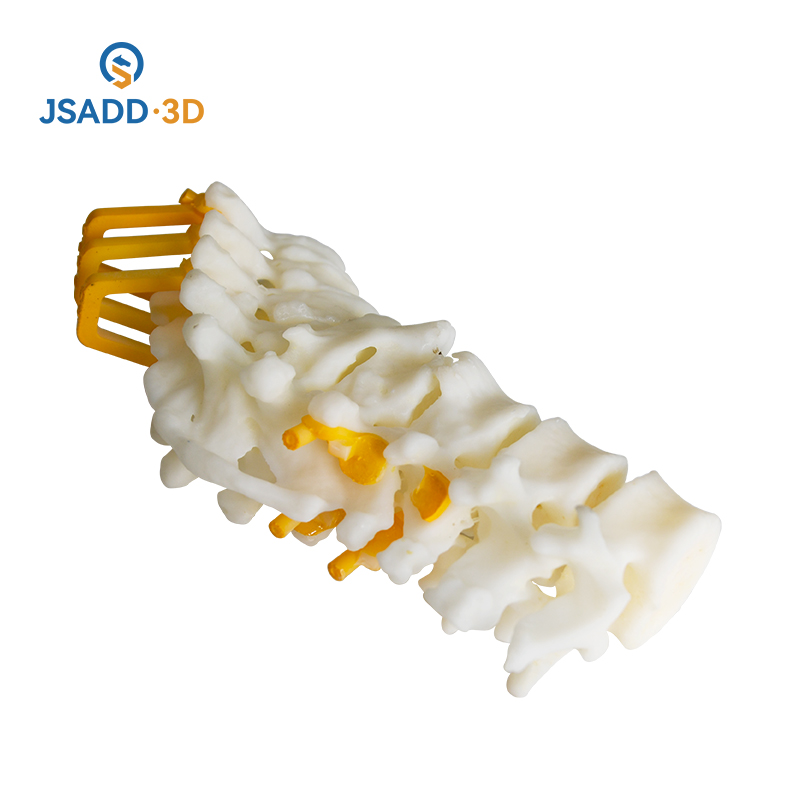SLA 3D printing is the most common resin 3D printing process that has become vastly popular for its ability to produce high-accuracy, isotropic, and watertight prototypes and end-use parts in a range of advanced materials with fine features and smooth surface finish.
SLA belongs to the category of resin 3D printing. Manufacturers use SLA to create a variety of objects, models, and prototypes using liquid resin as the primary materials. The SLA 3D printers are designed with a reservoir to contain the liquid resin. Also, they produce three-dimensional objects by hardening the liquid resin using a high-powered laser. The SLA 3D printer transforms the liquid resin into three-dimensional plastic objects layer by layer through photochemical processes. Once the object is 3D-printed, the 3D printing service provider removes it from the platform. Also, he cures the object by placing it in a UV oven after washing of the remaining resin. The pose-processing helps manufacturers to objects of optimal strength and stability.
A large percentage of manufacturers still prefer SLA 3D printing technology to create prototypes of high quality and precision. There are also a number of reasons why many manufacturers still prefer SLA to other 3D printing technologies.
1.More Precise than Other 3D Printing Technologies
SLA beats new-age 3D printing technologies in the category of precision. The SLA 3D printers deposit layers of resin ranging from 0.05 mm to 0.10 mm. Also, it cures each layer of resin using fine laser light. Hence, manufacturers use SLA 3D printers to produce prototypes with a precise and realistic finish. They can further use the technology to 3D print complex geometries.
2.A Variety of Resin
SLA 3D printers manufacture objects and products from liquid resin. A manufacturer has the option to use a variety of resin – standard resin, transparent resin, gray resin, mammoth resin, and high-definition resin. Thus, a manufacturer can produce a functional part using the most appropriate form of resin. Also, he can easily curtail 3D printing costs using a standard resin that offers great quality without being expensive.
3.Provides the Tightest Dimensional Tolerance
While creating prototypes or manufacturing functional parts, manufacturers look for 3D printing technologies that deliver optimal dimensional accuracy. SLA delivers the tightest dimensional tolerance. It delivers +/- 0.005″ (0.127 mm) dimensional tolerance for the first inch. Likewise, it delivers 0.002″ dimensional tolerance for each subsequent inch.
4.Minimal Printing Error
SLA does not expand the layers of liquid resin using thermal power. It eliminated thermal expansion by hardening the resin using a UV laser. The use of UV laser as data calibration components makes SLA effective in reducing printing errors. That is why; many manufacturers rely on SLA 3D printing technology to produce functional parts, medical implants, pieces of jewelry, complex architectural models, and similar high-precision models.
5.Simple and Quick Post-Processing
Resin is one of the most preferred 3D printing materials due to simplifying post-processing. The 3D printing service providers can sand, polish, and paint the resin material without putting in extra time and effort. At the same time, the single-stage production process helps SLA 3D printing technology to produce a smooth surface that does not require further finishing.
6.Supports Higher Build Volume
Like new-age 3D printing technologies, SLA supports higher build volumes. A manufacturer can use an SLA 3D printer to create build volumes up to 50 x 50 x 60 cm³. Hence, the manufacturers can use the same SLS 3D printers to produce objects and prototypes of varied sizes and scales. But SLA 3D printing technology does not sacrifice or compromise precision while 3D printing larger build volumes.
7.Shorter 3D Printing Time
Many engineers believe that SLA is slower than new-age 3D printing technologies. But a manufacturer can use an SLA 3D printer to produce a fully-functional part or component in about 24 hours. The amount of time required by the SLA 3D printer to produce an object or part still differs according to the size and design of the object. The printer will need more time to 3D print complex designs and complicated geometries.
8.Reduces 3D Printing Cost
Unlike other 3D printing technologies, SLA does not require 3D printing service providers to create a mold. It 3D-prints various items by adding liquid resin layer by layer. The 3D printing service providers can manufacture 3D items directly from the CAM/CAD file. Also, they can impress clients by delivering the 3D printed object in less than 48 hours.
Despite being a mature 3D printing technology, SLA is still used by manufacturers and engineers. But one should not forget that SLA 3D printing technology has its own advantages and disadvantages. The users can leverage these advantages of SLA 3D printing technology fully only by focusing on overcoming its major shortcomings. Following pictures are our SLA printing samples for your reference:
If you want to know more information and need to make 3d printing model, please contact JSADD 3D Manufacturer every time.
Author: Jessica / Lili Lu / Seazon






